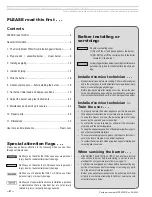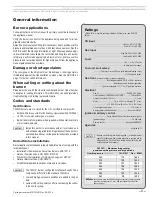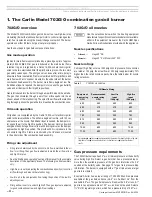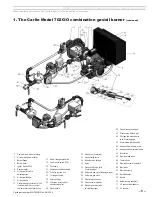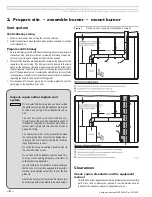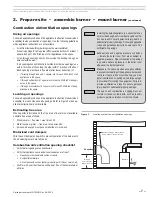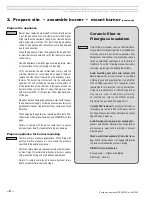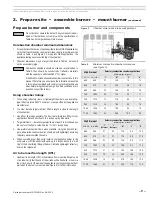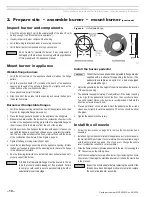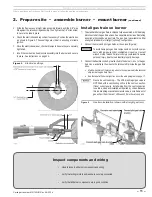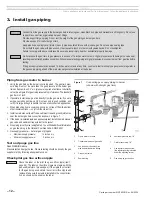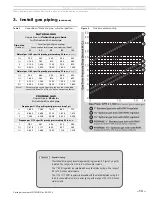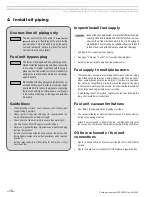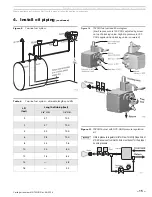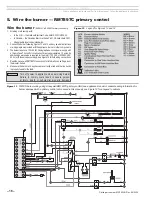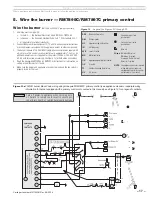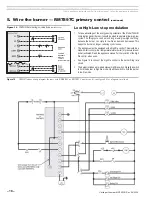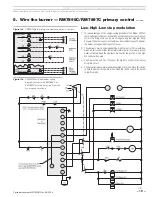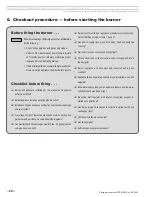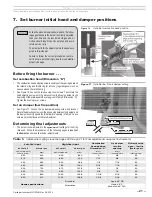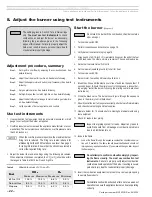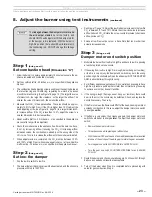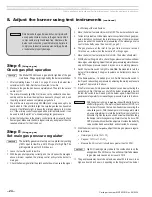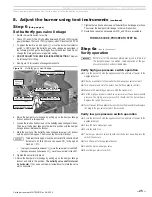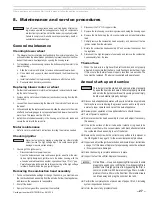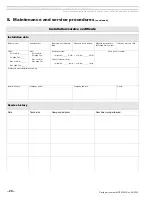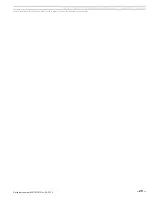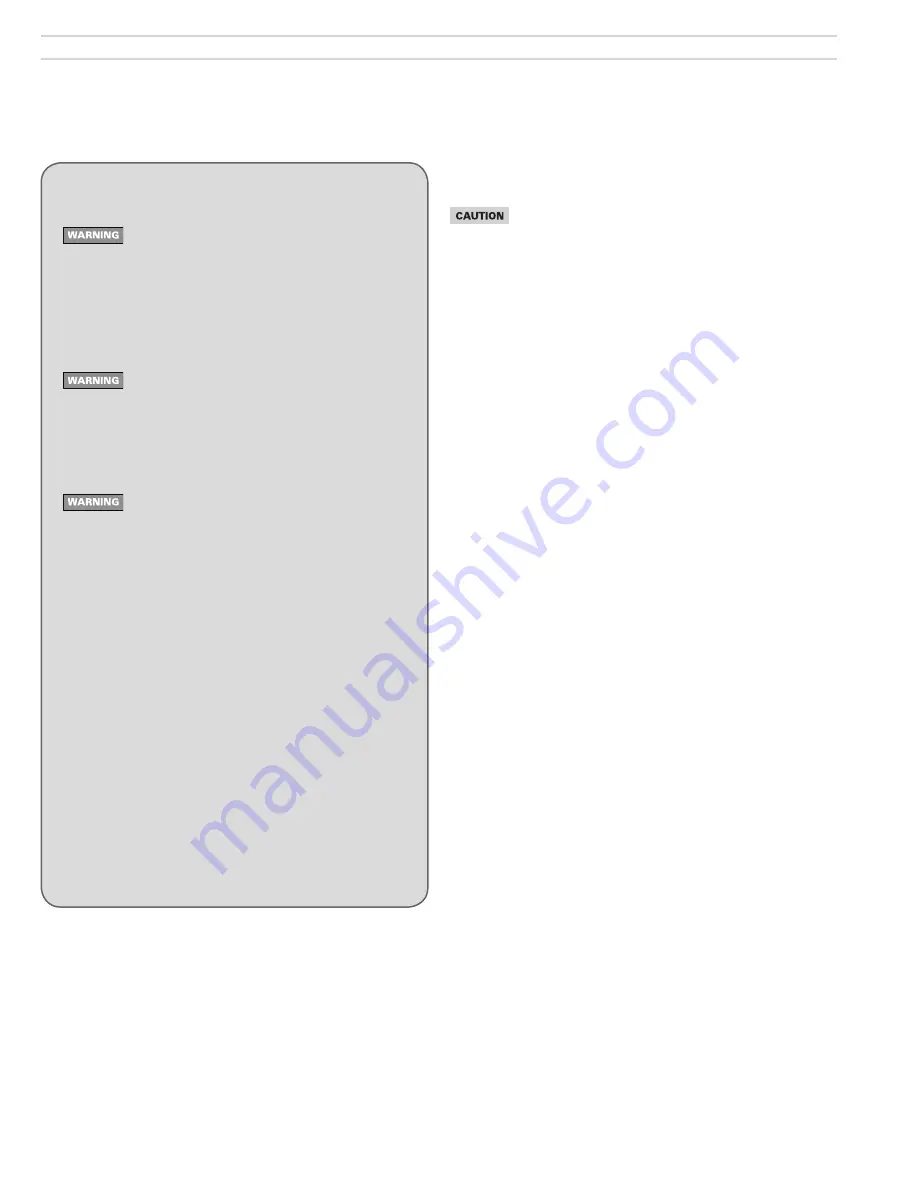
Model 702G/O Advanced gas/oil burners — Instruction manual
Carlin part number MN702GO Rev. 06/23/14
– 14 –
Where appliance instructions differ from this manual, follow the appliance instructions.
Inspect/install fuel supply
Inspect the oil supply system. Ensure that the fuel lines are
correctly sized and installed and that the fuel flow is unob-
structed, the oil tank is clean and only # 1 or # 2 heating oil
are supplied. Failure to supply a reliable oil flow could result
in loss of heat and potential severe equipment damage.
1.
See Figure 9 for typical two-line oil piping.
2.
See page 15, Figures 10 and 11, for fuel unit oil flow diagrams.
3.
Install the fuel unit bypass plug (two-line systems only).
Fuel supply to multiple burners
•
When possible, use separate fuel supply lines for each oil burner. Using
manifolded oil supply lines can create problems. If the lines are under-
sized, operating vacuum will exceed limits. If the lines are oversized,
fuel units may have difficulty priming. Because the lines must be sized
to handle the capacity of all the burners, the line size will almost always
be too large when only a single burner is running.
•
If manifolding cannot be avoided, carefully size the lines following the
fuel units manufacturer’s instructions.
Fuel unit vacuum limitations
•
See Table 4 for allowable lifts and lengths of oil lines.
•
The vacuum at the fuel unit inlet port must not exceed 12 inches mercury
during any operating condition.
•
Attach a vacuum gauge to either of the fuel unit inlet ports, and verify
the vacuum does not exceed the limit below during all firing conditions.
Oil flow schematic / fuel unit
connections
•
Figure 10 shows oil flow and fuel unit port functions for Carlin 702G/O
burners.
•
Figure 11 applies only for optional NYC-DAR pressure regulation kits.
4. Install oil piping
Use two-line oil piping only
The fuel unit must be connected to a
two-line fuel
system
to ensure oil flow through the pump during
gas operation. This is needed to keep the pump
cool and lubricated. Failure to protect the pump
can result in early pump failure.
Fuel unit bypass plug
The fuel unit is shipped with its bypass plug not in-
stalled. Install the bypass plug only when connecting
to a two-line oil system. Operating with the plug in
place on a one-line system (not recommended) will
damage the fuel unit and could lead to oil leakage
and fire hazard.
If the fuel line or fuel supply is above the burner, never
exceed 3 PSIG pressure at the fuel unit inlet. Install
a suitable OSV to reduce the pressure. Operating
the fuel unit with higher inlet pressure could result
in fuel unit seal damage, oil leakage and potential
fire hazard.
Guidelines:
•
When installing oil lines, use continuous runs of heavy-wall
copper tubing if possible.
•
Check fuel unit (oil pump) data sheet for recommended line
sizing, lift limitations and maximum length.
•
Check all connections and joints to ensure they are air-tight.
•
Use flare fittings. DO NOT use compression fittings.
•
Never use pipe sealing tape. Fragments can break off and plug
fuel line components.
•
Install a shut-off valve at the tank and one near the burner. (Use
fusible handle design valves when possible or when required
by codes.)
•
Install a large capacity fuel filter (rated for 50 microns or less)
near the burner.


